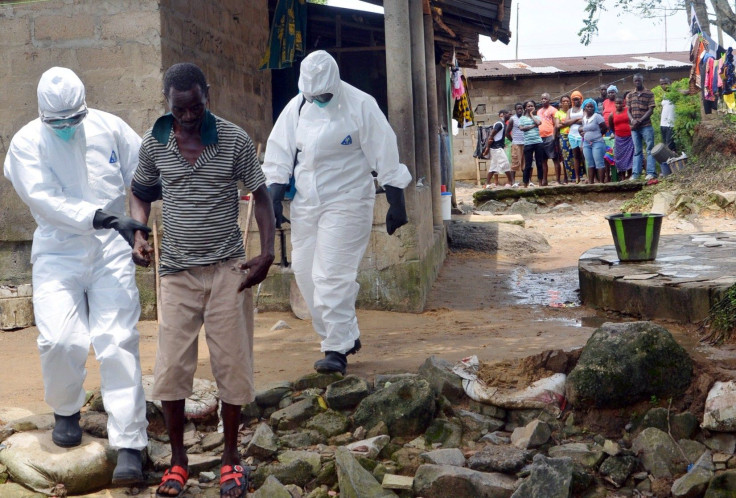Origin Of Ebola Outbreak May Be A Bat And Virus Has Rapid Mutation Rate

The Ebola virus has mutated 300 times since the deadliest outbreak in history began in West Africa in May, and these transformations lead scientists to conclude that it is unlike any past Ebola epidemic. This could make it both harder to treat and harder to diagnose, according to a study published in Science magazine Thursday.
The outbreak began as a single human infection, the authors write, but the genetic sequences observed in the 78 patients sampled showed a rapid spread in both the number of people infected and the geographical regions affected. As it stands, the virus is unlike anything seen in the past, which will hinder the creation of treatments and make it difficult to fully contain the contagion, the study found.
“We’ve uncovered more than 300 genetic clues about what sets this outbreak apart from previous outbreaks,” said Stephen Gire, a co-author and disease researcher at Harvard.
The initial infection, contracted by a woman in Sierra Leone, came from one of five strains of Ebola known to affect humans called the Zaire strain. The Zaire strain came about a decade ago in a related strain from an animal host. Researchers are not positive which animal hosted the virus, but said it was most likely was a bat in Guinea. At least one species of fruit bat has a geographic range that spreads from Guinea to Sierra Leone. If bats are really the culprit, "about 150 million more people than previously thought are at risk of the disease," according to a previous study published in Science about Ebola.
The virus then crossed into Sierra Leone when the first woman diagnosed attended a funeral for someone who had recentely been in contact with Ebola in Guinea, the study found.
Since then, it “has exhibited sustained human-to-human transmission subsequently, with no evidence of additional zoonotic [animal] sources.”
One of the problems with this particular outbreak is that scientists have not been able to fully trace the virus from 2004 in Guinea to the current outbreak. Being unable to predict where it will next appear makes it very difficult to contain. The World Health Organization said Thursday that it hopes to stop the spread by 2015.
“We don’t actually know where the virus has been since then,” Pardis Sabeti, an associate professor at Harvard whose lab studied the Ebola genomes, told the Washington Post. “We’re trying to piece together an historical record.”
There is no cure for Ebola yet. On Thursday, an experimental Ebola vaccine made by UK-based pharmaceutical company GlaxoSmithKline was approved for testing on humans, but the results are not expected for at least a month.
Clues from Thursday’s study have scientists hopeful that nonstop research on mutations will help develop new diagnostic tests and treatments. “We've got to crowdsource the epidemic,” Sabeti said. “The more information you get into hands of people who can help, the more likely you are to come up with a solution.”
In the study, 99 Ebola samples were taken from 78 patients diagnosed with Ebola from May to late June. More than 50 people co-authored the study with help from Harvard University scientists and the Sierra Leone Health Ministry.
Five of the authors died before the paper was even published. Since May, Ebola has killed more than 1,400 people in four countries.
© Copyright IBTimes 2024. All rights reserved.












